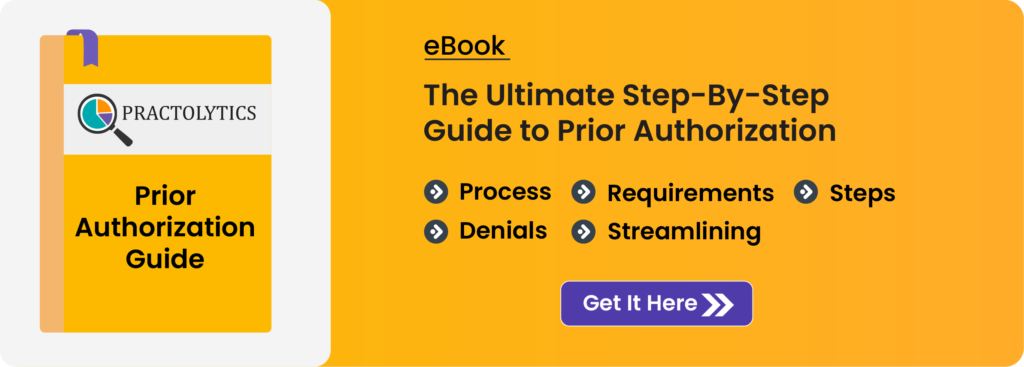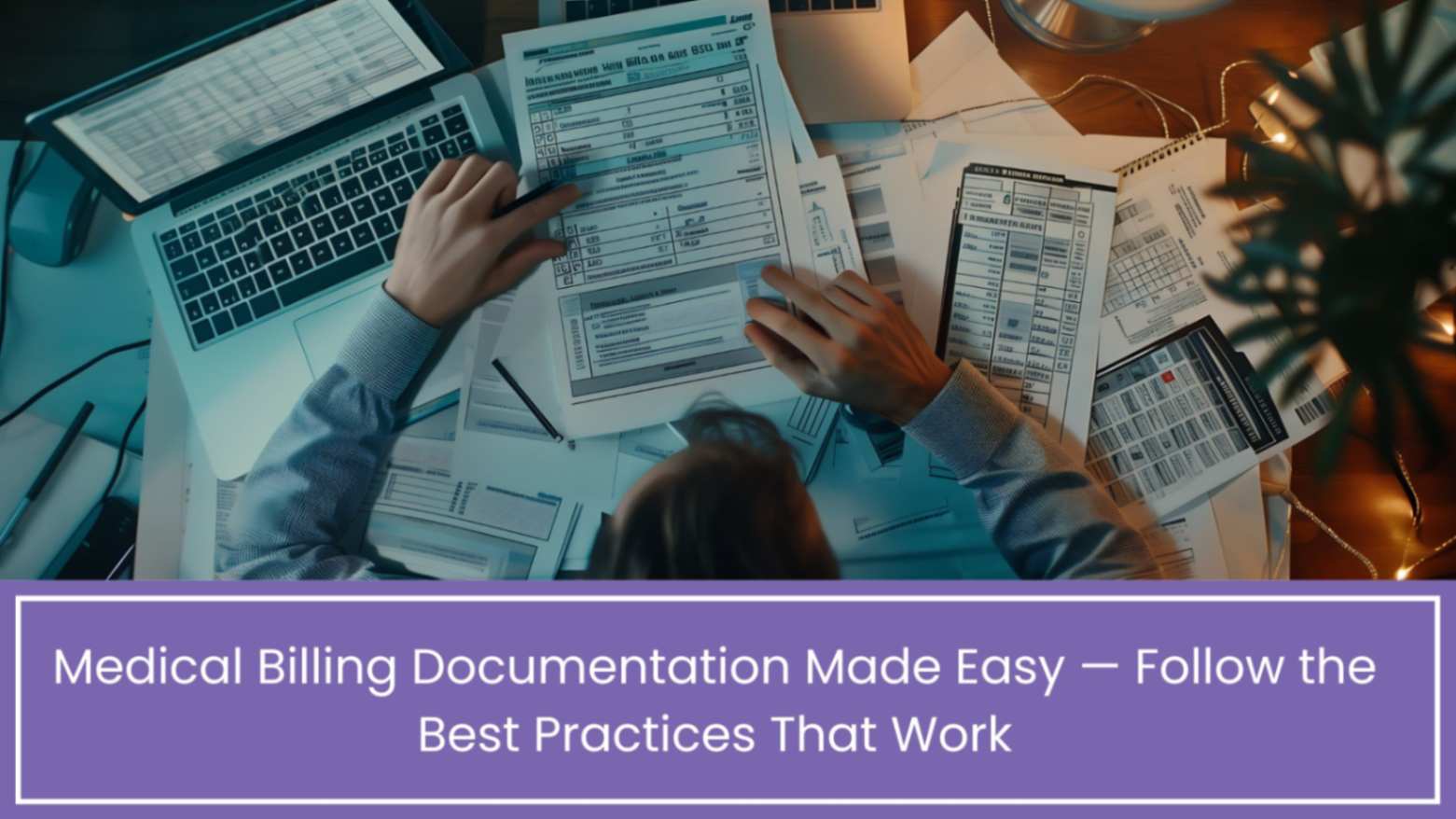Automating Prior Authorizations with Tools and Techniques
Manual prior permission procedures are a significant bottleneck in the complicated healthcare system of today, resulting in delays, denials, and administrative difficulties. Automating Prior Authorizations with Tools & Techniques are revolutionizing this crucial field by utilizing cutting-edge technology to expedite approvals, decrease errors, and streamline procedures. This page examines how healthcare operations are changing as a result of these creative solutions, enabling clinicians to concentrate more on patient care and less on paperwork. Discover the advantages, difficulties, and essential components of successful prior authorization automation.
In the healthcare industry, outsourcing prior authorization services has long been a major administrative burden that results in delays in patient care, higher operating expenses, and generalized annoyance among patients and clinicians. The old-fashioned manual method, which frequently involves faxes, phone calls, and copious amounts of documentation, is ineffective and prone to mistakes. But the introduction of Best Prior Authorization Automation Tools & Techniques is changing this environment and providing a way to greatly increase patient satisfaction, accuracy, and efficiency.
Table of Contents
Imperative for Prior Authorization Automation
The sheer volume and complexity of prior authorization requests continue to rise. Each request can involve multiple steps, varying payer rules, and significant time investment from administrative staff. This manual burden leads to:
- Patients experience delays in treatment while prior authorizations are processed. These delays can negatively impact their health.
- High Administrative Costs: Healthcare organizations spend a lot of money on managing PA, taking money away from providing direct patient treatment. This includes staff time, phone lines, and fax machines.
- Denials and appeals may result from human error. This is due to the fact that manual procedures are prone to errors such as missing data or incorrect coding.
- Provider Burnout: Staff dissatisfaction and burnout are impacted by the difficulties with Prior Authorization paperwork. This also lowers morale and retention.
By using technology to automate monotonous activities, increase data accuracy, and speed up communication between payers and providers, Prior Auth Automation Tools & Techniques directly solve these issues.
Benefits of Automating Prior Authorizations
For healthcare professionals, putting Prior Authorization Automation Tools into practice has several benefits:
- The administrative load is lessened by automation. This is because it drastically cuts down on the amount of time workers spend on data input, phone calls, and faxing. Important resources can then be allocated as a result. Interactions with patients can be enhanced.
- Automated systems can handle requests much faster than traditional ones. It can complete requests in minutes or hours instead of days or weeks. This accelerated authorization procedure enhances patient satisfaction and health outcomes. Hence, timely assistance is provided.
- Automation lowers the possibility of denials. It does this by ensuring correct and complete submissions, adhering to payer regulations, and identifying potential issues before submission. This leads to higher first-pass approval rates.
- Cost Savings: With reduced manual effort and fewer denials requiring appeals, healthcare organizations can realize substantial cost savings per transaction. Automated prior authorizations are significantly cheaper than manual ones. They cost as little as $0.05 per transaction, while manual authorizations can cost up to $3.41
- Patients who receive approvals quickly experience less stress and annoyance. This leads to increased confidence and satisfaction with their medical professionals.
- Automation help businesses in maintaining compliance audits. They accomplish this by staying abreast of the most recent regulatory advancements and payer regulations.
- Employees are able to track developments and identify difficulties. Real-time insight into the current state of prior-authorization requests is made possible via automated solutions.
Common Challenges in Prior Authorization Automation
While the benefits are clear, implementing Prior Auth Automation Techniques is not without its challenges:
- The wide range of distinct and often shifting prior permission requirements among various payers is one of the main obstacles. This makes it difficult for medical personnel to adhere to the policy. Automation systems need to be flexible enough to benefit from these developments.
- Integration with Current Systems: It’s critical that Electronic health records, revenue cycle management systems, and other softwares integrate seamlessly. However, failing to integrate properly can lead to incorrect data. It also decreases the automation efficiency.
- Completeness and Accuracy of Data: Automation requires accurate and thorough data. The automated method can still require human intervention if the source data in EHRs is missing or mixed up.
- Employee resistance to new procedures and technologies may exist. For this to be successfully adopted, extensive training and change management strategies are required.
- Return on investment is typically high over the long run. Pre-authorization automation software and its integration, however, might come with a hefty upfront cost.
- Many situations can be handled by automation, but other requests need human review. Human support is required for complex or rare prior permission requests.
Best Prior Authorization Automation Software Features
Prior Auth Automation Tools & Techniques should be evaluated by taking into account products that provide the following essential features:
- Benefits & Eligibility in Real Time Verification: To ascertain whether prior authorization is required, immediately confirm the patient’s insurance status and benefits.
- Payer Rule Knowledgebase provides a library of clinical criteria, forms, and prior authorization requirements. This library is unique to each payer and frequently updated.
- Automated data extraction refers to the ability to automatically retrieve clinical and patient data from EHRs. Form population, on the other hand, is the process of automatically filling out prior permission forms.
- Intelligent Workflow Automation uses machine learning and rules-based engines. These engines automate tasks like routing requests, finding missing data, and submitting them to payer portals.
- Integration of APIs and EHRs enables smooth communication between systems. This integration ensures data flow. It reduces the need for manual data entry.
- Status Monitoring tracks requests. Alerts notify users of problems and provide real-time dashboards.
- Denial Management and Analytics monitor the causes of denials. These tools help identify patterns and suggest proactive measures to prevent denials and improve processes.
- Secure communication channels are needed for communicating with payers about sensitive patient information. These channels must be compliant and encrypted.
- Analytics and reporting provide detailed insights into cost reductions, turnaround times, and approval rates. These reports also include other important performance metrics.
- The solution’s scalability allows it to handle increased demands. It also manages the rising numbers of prior permission requests.
AI in Prior Authorization Process
AI is revolutionizing prior authorization process in automation tools and techniques. AI-powered solutions exceed conventional automation in the following ways:
- Natural language processing is used to extract important unstructured data from clinical notes and other free-text sections in electronic health records. This data is used to assist medical necessity.
- Machine learning uses past data to forecast approval chances. It also helps pinpoint typical denial causes and suggest the best supporting documents to submit.
- Predictive analytics enables early intervention. It identifies cases likely to need prior authorization or denial.
- Automated Clinical Decision Support provides education on the specific clinical information needed for different medications or therapies to payers. This ensures that staff members are informed about payer requirements.
- Adaptive learning is the process of continuously increasing efficiency and accuracy by taking lessons from previous prior authorization requests, policy changes, and new payer regulations.
AI improves Prior Auth Automation Tools & Techniques’ capacity to manage intricate situations, lower error rates, and expedite approvals—bringing the procedure closer to a “touchless” experience.
Prior Authorization Automation Tools
Several vendors offer robust Prior Authorization Automation Tools Some prominent examples include:
- Innovaccer’s Prior Authorization Agent: Known for deep EHR integration, AI-driven data extraction, and real-time dashboards.
- Waystar (Auth Accelerate): Integrates directly with many EHR systems, maintaining an extensive library of payer rules, and offering end-to-end automation.
- CoverMyMeds: A widely recognized platform, particularly strong for medication prior authorizations, connecting prescribers, pharmacies, payers, and patients.
- Experian Health’s Authorizations: Automates inquiries and status monitoring, leveraging a comprehensive payer database and AI to prevent denials.
- Surescripts Touchless Prior Authorization: Focuses on streamlining medication PA with direct EHR integration and instant request submission.
- Cohere Health automates processes across payer systems. It also integrates with EHRs and leverages AI to support clinical decisions.
- ScribeRunner offers high approval rates and robust EHR integration. The start, delivery, and follow-up processes are streamlined by its AI-powered workflows.
The selection of tools is influenced by the business’s needs. These needs include the business’s size, IT configuration, and previous authorization requests. These factors influence the selection process.
Prior Authorization Automation Pricing & Software Demo
The vendor, the scope of the system, the number of transactions, and the degree of connectivity needed all affect how much it costs. The majority of vendors provide custom quotes or tiered pricing structures based on each healthcare organization’s unique requirements.
It is strongly advised to request a software demo. This will allow you to fully understand the possibilities and how a solution can address and fix your unique challenges. Moreover, demos will provide an opportunity to:
- Observe the software in use and learn how it works.
- Inquire specifically about the particular needs of your company.
- Evaluate the usability and user interface.
- Discuss about potential integrations with current systems.
- Get a more accurate estimate of pricing based on your operational scale.
- Many vendors offer free consultations or demos to prospective clients.
FAQ’s:
1.What are the best prior authorization automation tools for hospitals?
Strong EHR connectivity, extensive payer rule databases, scalability to manage enormous volumes, and cutting-edge AI capabilities are frequently given top priority in the best technologies for hospitals. Leading options include Waystar, Innovaccer’s Prior Authorization Agent, Experian Health’s Authorizations, and solutions like ScribeRunner which are designed for large health systems. The optimal choice will depend on the hospital’s existing IT infrastructure and specific needs.
2.How does AI improve prior authorization workflows?
Artificial intelligence enhances prior authorization operations. It automates data extraction from unstructured clinical notes. AI also forecasts approval likelihood and rejection reasons using machine learning and offers real-time clinical decision support. As a result, Higher accuracy, quicker processing times, and less manual intervention.
3.What percentage of prior authorizations can be automated?
A sizable percentage of prior authorizations can be entirely automated. But not all of them. This is due to their complexity or particular payer criteria. However, according to industry sources, between 70% and 80% of prior authorizations can be automated. Especially those which require administrative as well as clinical assessment. AI and advanced automation continue to push this percentage higher.
4.How much can prior authorization automation save per transaction?
Prior authorization automation can lead to substantial savings per transaction. According to the 2024 CAQH Index Report, a manual prior authorization transaction costs approximately $3.41. With automation, this cost can drop to as little as $0.05 per transaction, representing a savings of over 98%. Additionally, automation saves an average of 14 minutes per transaction in staff time.
Conclusion:
Healthcare administration is changing quickly, and the best Prior Auth Automation Tools and Techniques are leading the way in this change. Healthcare businesses can successfully solve the ongoing difficulties with manual prior authorizations. These cutting-edge technologies can improve denial rates, expedite workflows, and save money. They also increase patient care and satisfaction. Healthcare providers need strategic automation deployment. This is especially important when combined with artificial intelligence.
For healthcare practitioners, manual prior authorizations services are an expensive and time-consuming burden that can result in treatment delays, employee burnout, and unhappy patients. This comprehensive study examines how, in 2025, Prior Auth Automation Tools & Techniques are transforming the procedure. Discover the advantages of automation, such as quicker approvals, lower expenses, and fewer denials, as well as the essential characteristics of contemporary PA software, such as real-time eligibility verification, AI-powered decision support, and smooth EHR Software interface. The blog also looks at popular implementation issues, industry-leading software programs like Waystar, Innovaccer, and ScribeRunner, and how artificial intelligence (AI) improves automation’s precision and effectiveness. This handbook, which includes vendor comparisons, FAQs, and practical insights, enables healthcare companies to reduce administrative waste, optimize workflows, and enhance patient outcomes and financial performance through intelligent prior authorization automation.
Read More – Prior Authorization for MRI






